10 Iconic Floral Still Lifes You Need to Know
Flowers have long been a central theme in still-life painting. Each flower carries its own symbolism. For example, they can represent innocence,...
Errika Gerakiti 6 February 2025
The Adoration of the Magi (or the Adoration of the Kings) is one of the two biblical accounts that convey the birth of Jesus Christ and describes the indispensable episode in the Nativity of Christ when the Magi made their pilgrimage to witness the highly anticipated birth of the prophesied son of the Abrahamic God. This portrayal is of great significance in Christian iconography and theology and serves as a powerful devotional symbol celebrating the incarnation of Christ as a divine being.
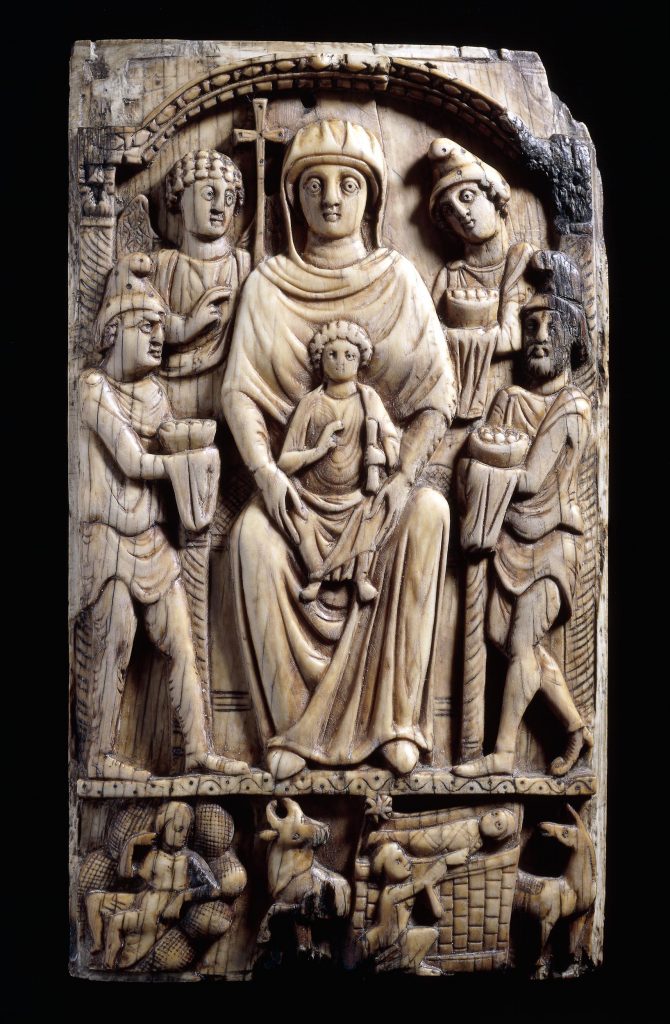
Ivory plaque with the Adoration of the Magi, ca. 500-550, British Museum, London, UK.
And when they came into the house, they saw the young child with Mary, his mother, and fell down, and worshipped him: and when they had opened their treasures, they presented unto him gifts; gold, and frankincense and myrrh.
The Gospel according to St. Matthew, Chapter 2, Verse 11
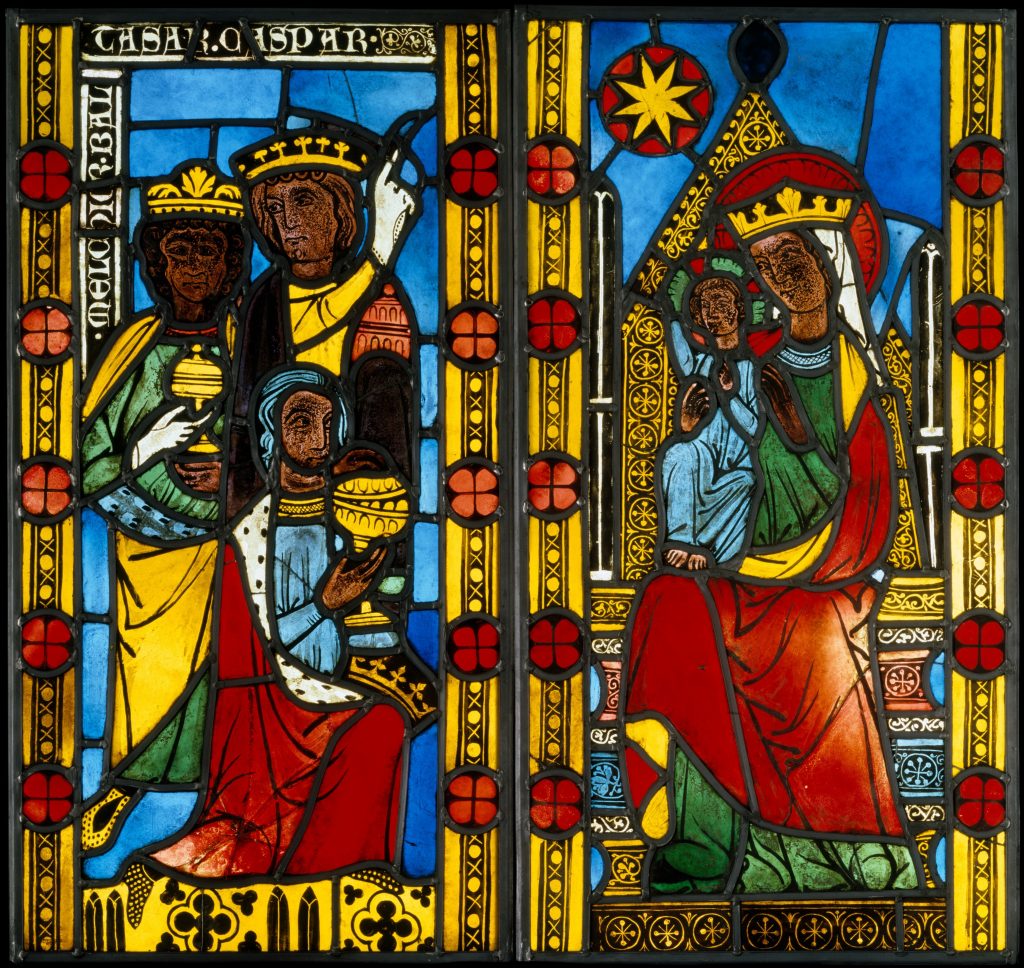
The Adoration of the Magi, ca. 1290 to 1300, The Metropolitan Museum of Art, New York, NY, USA.
The birth of Jesus Christ has been described in two accounts in the Bible, in the Gospels according to Saint Luke and Saint Matthew, each with varying narratives of the holy birth. Despite different interpretations, there is a consensus that Mary and Joseph, the parents of Jesus, were from the city of Nazareth, and that Jesus was born in Bethlehem. The Gospel of Matthew tells the tale of the Magi, who were highly distinguished and learned men from the East, that followed the Star of Bethlehem to the site of the birth. The Adoration of the Magi became one of the most popular subjects in Christian art.
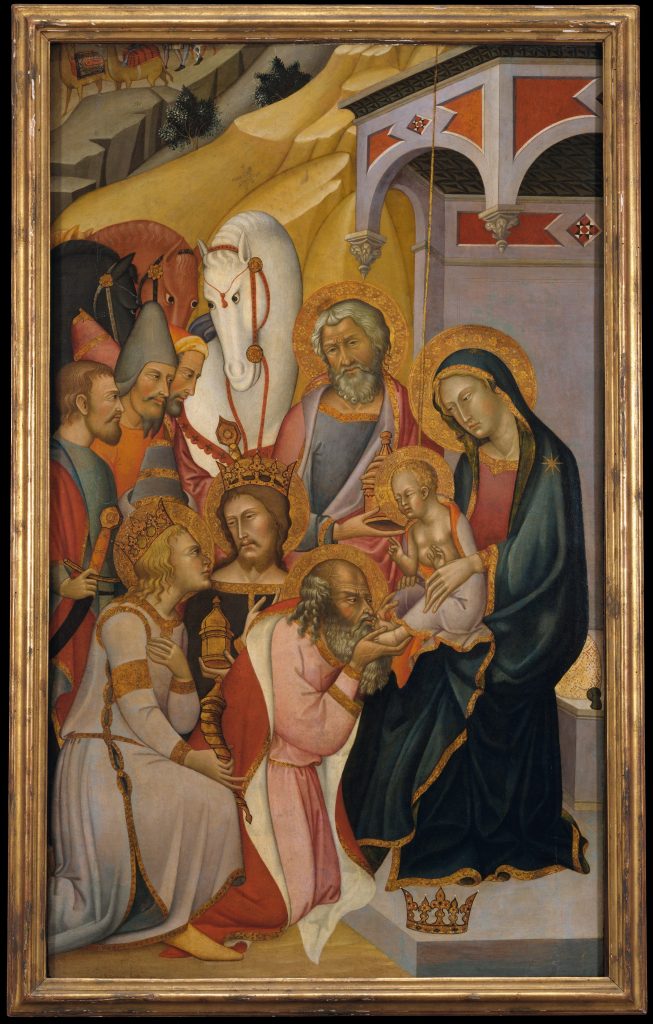
Bartolo di Fredi, The Adoration of the Magi, ca. 1390, The Metropolitan Museum of Art, New York, NY, USA.
The scriptures indicate that the Magi were led from the East and arrived first in the capital city of Jerusalem. The ruler, Herod the Great, was alerted to their intriguing quest and sought their appearance in his court, where the Magi explained the prophecy and their desire to kneel before the newly-born “King of the Jews”. The king feared usurpation and gathered his foremost experts to reveal the place of the foretold birth, which pointed them to the nearby city of Bethlehem, merely five miles south of Jerusalem. King Herod allowed the Magi to continue their journey with fervent instructions to report back to him once the infant was located.
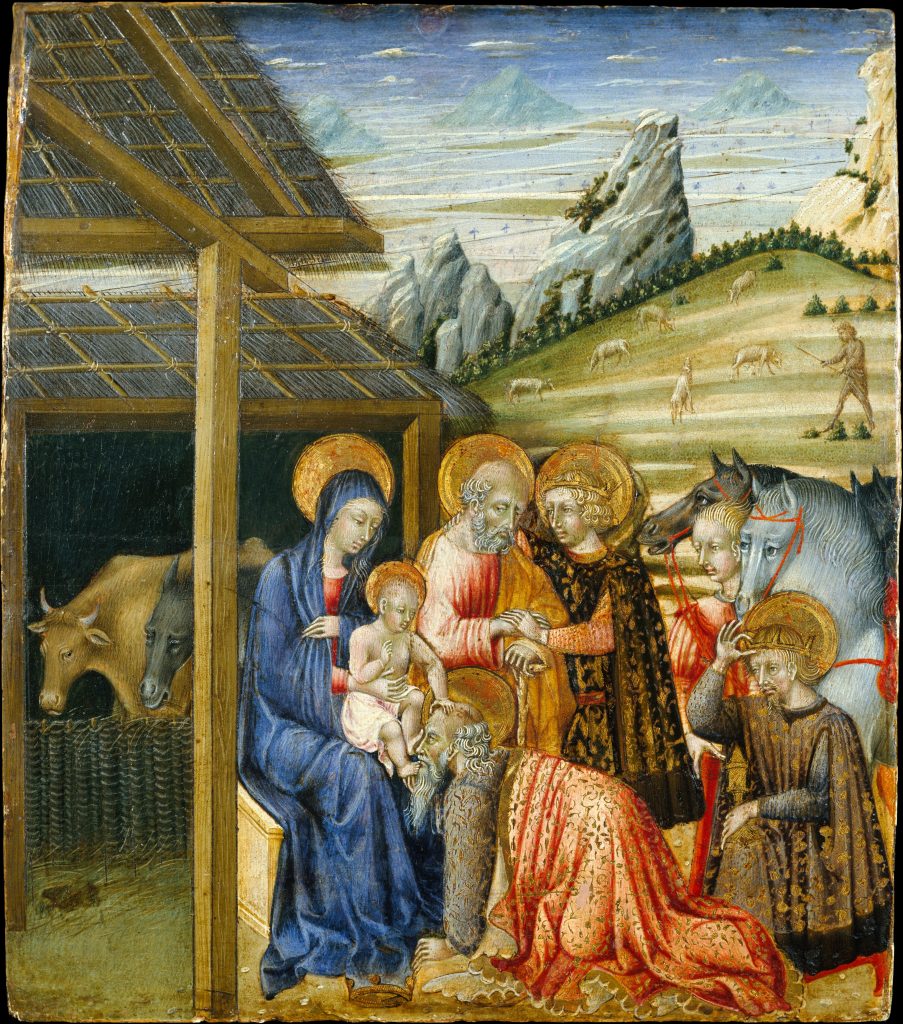
Giovanni di Paolo (Giovanni di Paolo di Grazia), The Adoration of the Magi, ca. 1460, The Metropolitan Museum of Art, New York, NY, USA.
In Bethlehem, the Magi were overjoyed to discover Jesus with his mother, Mary, and bent the knee to the holy infant. They were convinced of his divinity and believed him to be the incarnation of God himself as well as the prophesied King of the Jews. The Magi made their precious offerings of gold, frankincense, and myrrh to Jesus as a sign of their devotion. The scriptures then reveal that the Magi were warned by God in a dream of Herod’s malicious intention to harm Jesus, so rather than report the location of the child, the Magi returned to their countries of origin via a different route thereby avoiding crossing paths again with Herod.
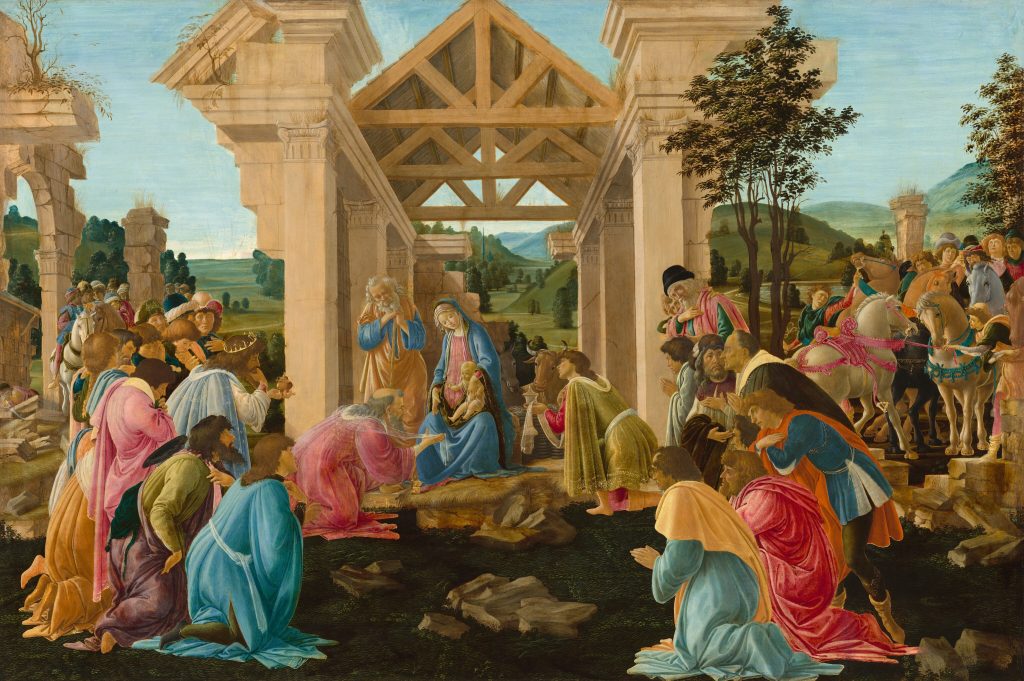
Sandro Botticelli, The Adoration of the Magi, ca. 1478/1482, National Gallery of Art, Washington DC, USA.
Although the term Magi refers to learned astrologers or sorcerers belonging to the priestly castes of the Zoroastrian tradition, in its biblical context, it has been deemed to be either kings or wise men who traveled to Bethlehem following the Star of Bethlehem. The identity of the Magi was not revealed in the Gospel of Matthew, however, through the ages, many non-canonical theories proliferated as to their identity. It was agreed that they were from the East, and according to some hypotheses, each of the three represented the three known continents at the time, i.e. Europe, Asia, and Africa. Some accounts also assume there could have been a lot more than three as the Bible remains silent on the number, however, the number three has been widely accepted in reference to the three offerings the Magi brought to the Christ child, that is gold, frankincense, and myrrh.
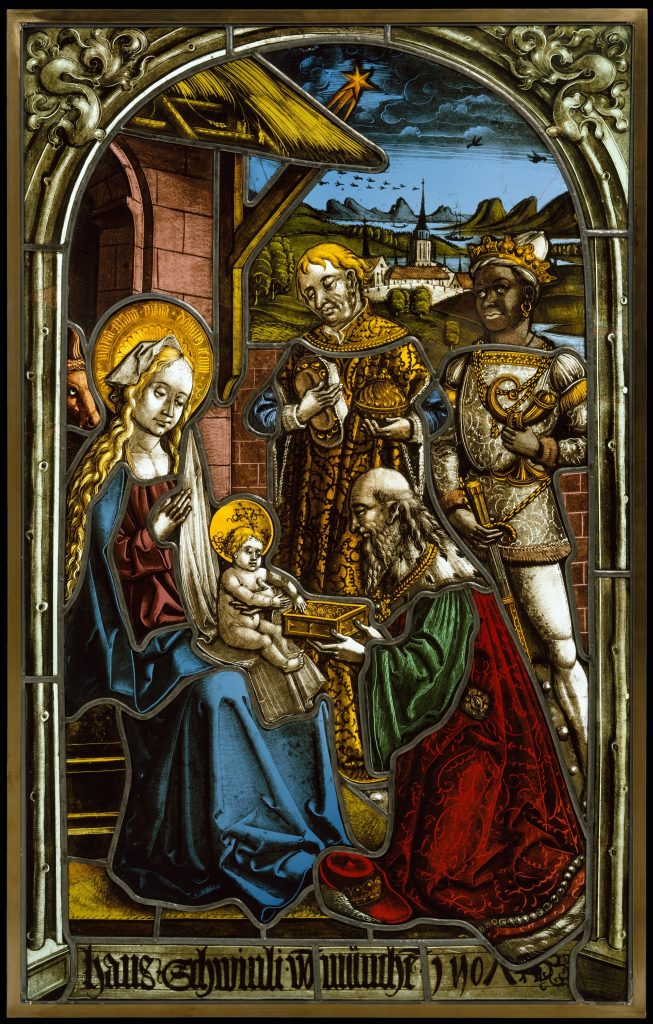
Circle of Peter Hemmel von Andlau (Strassburger Werkstattgemeinschaft), The Adoration of the Magi, ca. 1507, The Metropolitan Museum of Art, New York, NY, USA.
The Magi were typically illustrated in the deferential position of “tribute-bearers” which was a common motif in the arts of the Near East dating back many centuries. Given the Persian origin of the term Magi, in many works, they were frequently depicted in clothing that included breeches, capes, and Phrygian caps. While many depictions display the Magi offering their exquisite gifts, some artists chose to focus on the moment of their arrival.
The style and narrative were greatly expanded by skilled artists, illustrators, and sculptors that started to build in more components such as the development of their identity, the mode of their arrival, their entourage, and many other intricate details to emphasize the pomp and pageantry of this indispensable episode of Christian theology.
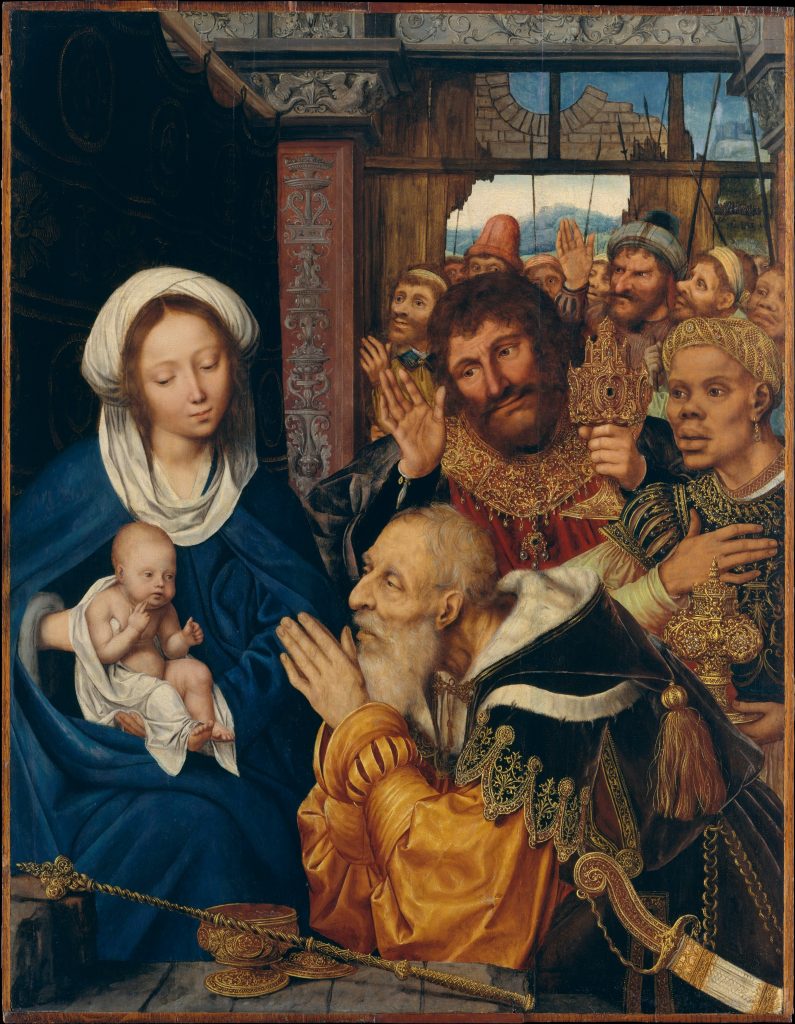
Quentin Massys, The Adoration of the Magi, ca. 1526, The Metropolitan Museum of Art, New York, NY, USA.
While the Magi were not named in the Bible, the names Gaspar, Melchior, and Balthasar have been assigned by the prevailing theories on the subject. According to some artistic and cultural traditions, the Magus Balthasar is frequently represented as a young man and a king of either Arabia or Ethiopia, and he is depicted with African or Moorish features. Caspar (or Gaspar) may be represented as an old man from either India or East Asia, while Melchior was assumed to be a middle-aged man who represented either Europe or Persia. Melchior presented Jesus with gold, Balthasar with Frankincense, and Caspar with myrrh.
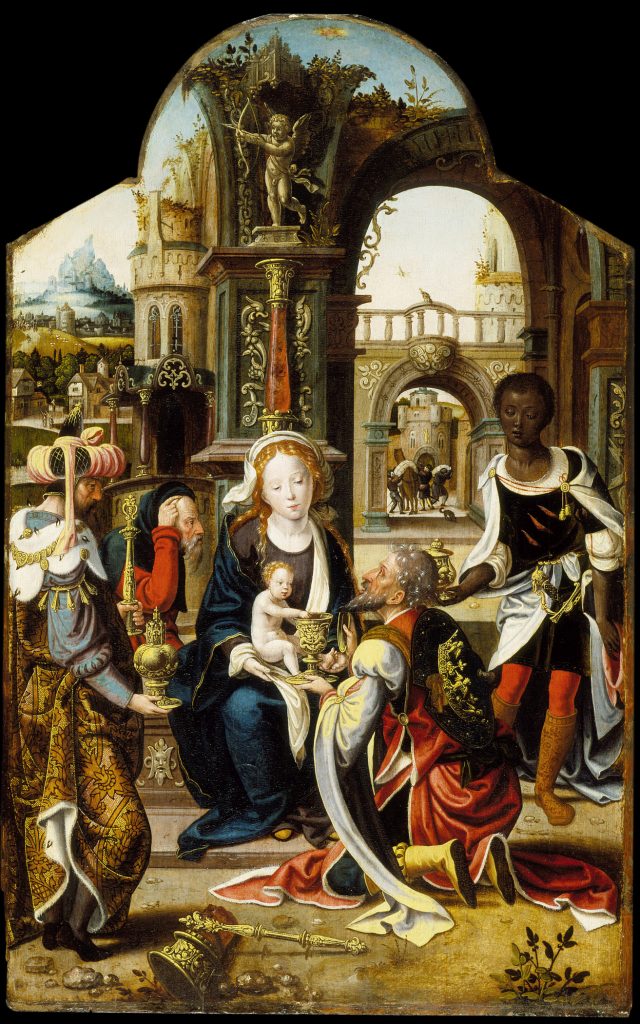
Pieter Coecke van Aelst (workshop), The Adoration of the Magi, ca. 1502-1550, Los Angeles County Museum of Art, Los Angeles, CA, USA.
Artworks depicting the Adoration of the Magi show the disparity between the wealthy and joyous entourage of the Magi with the rustic barn where Jesus was born to a meek and rather helpless Mary. Artists employed their best skill to depict complex and crowded scenes with a diverse array of objects that were either integral or complementary to the portrayal. Halos were frequently included to depict Jesus Christ and his mother, Mary, and sometimes also the Magi. All artworks, across the many mediums, shared in common the utmost reverence demonstrated by the Magi upon witnessing Jesus Christ.
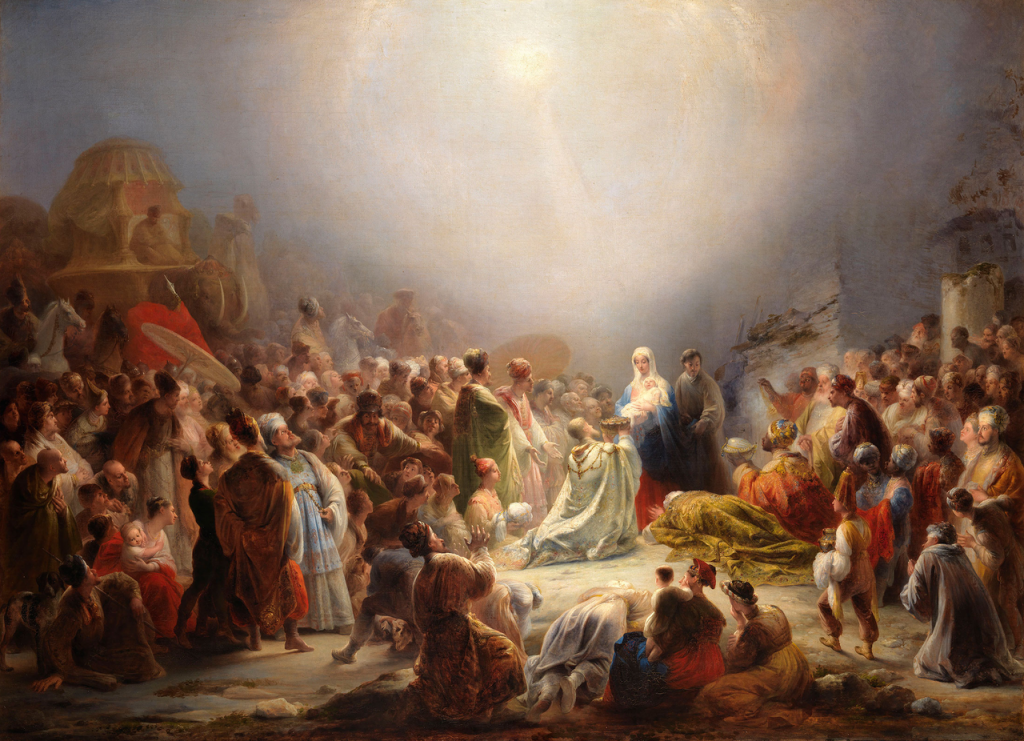
Domingos Sequeira, The Adoration of the Magi, ca. 1828, National Museum of Ancient Art, Lisbon, Portugal. Wikimedia Commons (public domain).
This episode of the Bible is of great iconographic significance as it recognizes the divinity of Jesus Christ and promotes the idea that Christ was, even in his infancy, the foretold son of God. The Magi have been recognized as patron saints of travelers and their adoration is commemorated by the Eastern Orthodox Church as the Feast of the Nativity on December 25, and by Western Christianity as the Feast of the Epiphany on January 6.
Dawson W. Carr, Andrea Mantegna’s The Adoration of the Magi. Getty Museum Studies on Art, Los Angeles. Accessed October 30, 2022.
DailyArt Magazine needs your support. Every contribution, however big or small, is very valuable for our future. Thanks to it, we will be able to sustain and grow the Magazine. Thank you for your help!